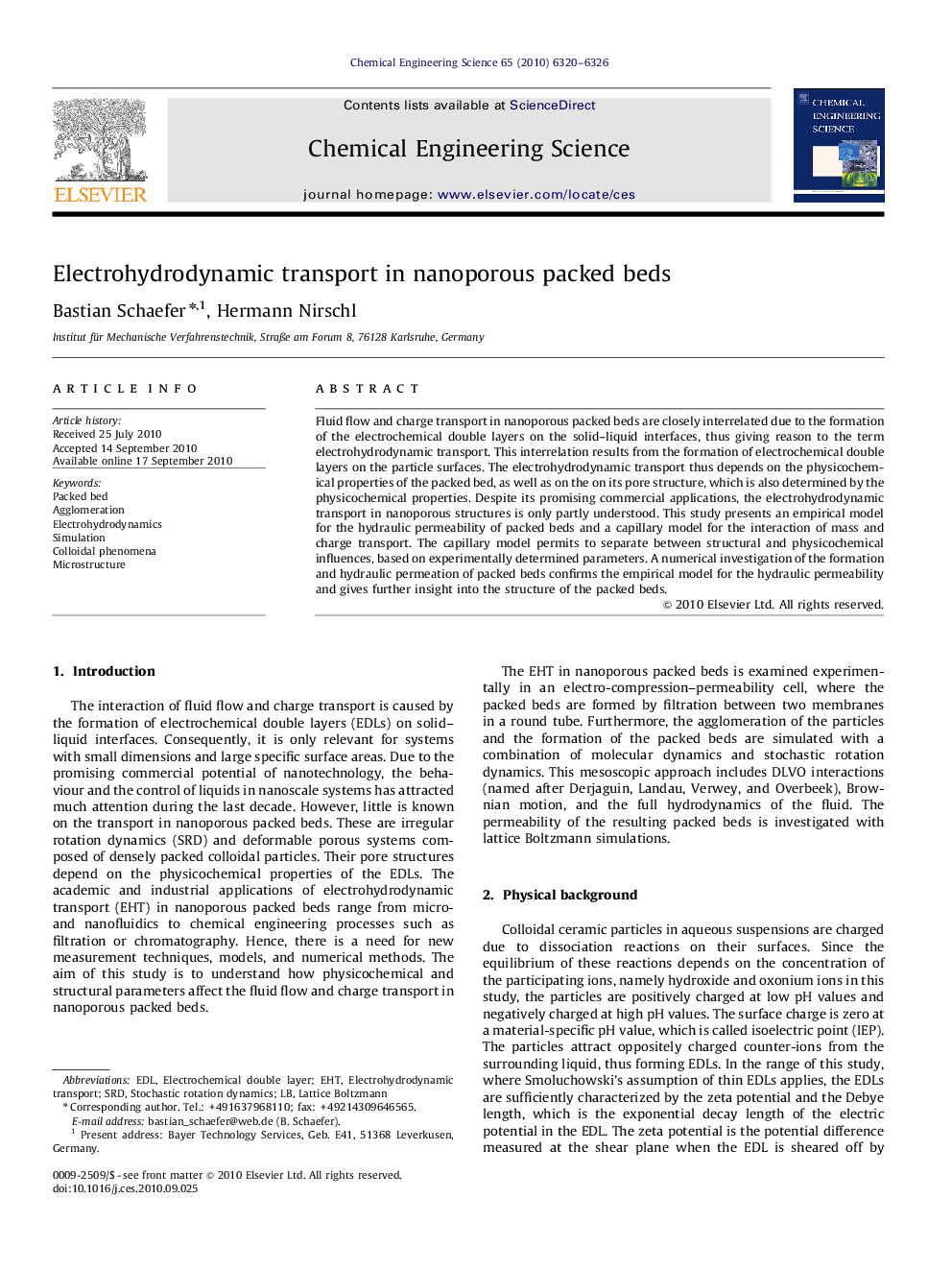| Article ID | Journal | Published Year | Pages | File Type |
|---|---|---|---|---|
| 156102 | Chemical Engineering Science | 2010 | 7 Pages |
Abstract
Fluid flow and charge transport in nanoporous packed beds are closely interrelated due to the formation of the electrochemical double layers on the solid-liquid interfaces, thus giving reason to the term electrohydrodynamic transport. This interrelation results from the formation of electrochemical double layers on the particle surfaces. The electrohydrodynamic transport thus depends on the physicochemical properties of the packed bed, as well as on the on its pore structure, which is also determined by the physicochemical properties. Despite its promising commercial applications, the electrohydrodynamic transport in nanoporous structures is only partly understood. This study presents an empirical model for the hydraulic permeability of packed beds and a capillary model for the interaction of mass and charge transport. The capillary model permits to separate between structural and physicochemical influences, based on experimentally determined parameters. A numerical investigation of the formation and hydraulic permeation of packed beds confirms the empirical model for the hydraulic permeability and gives further insight into the structure of the packed beds.
Keywords
Related Topics
Physical Sciences and Engineering
Chemical Engineering
Chemical Engineering (General)
Authors
Bastian Schaefer, Hermann Nirschl,
